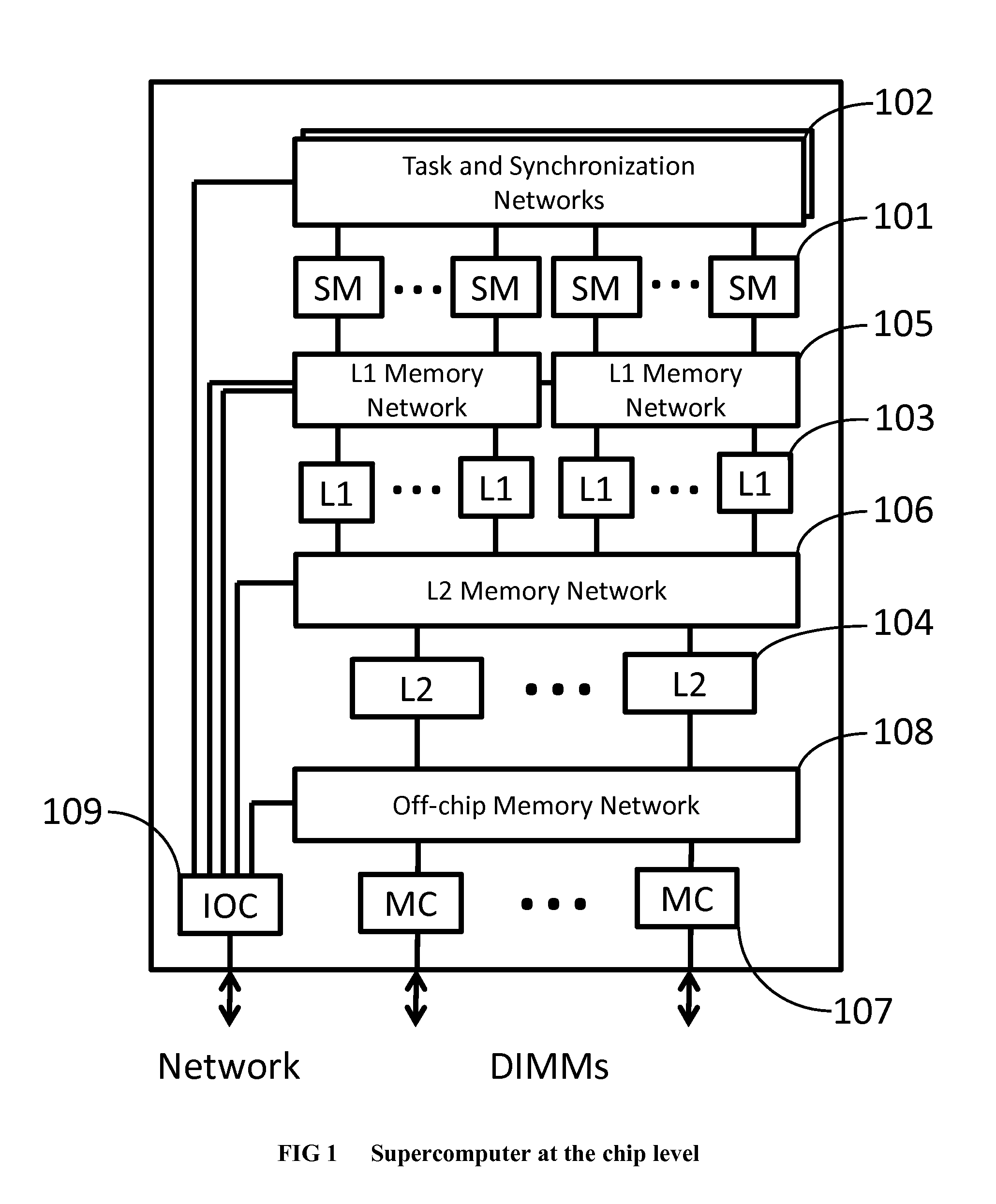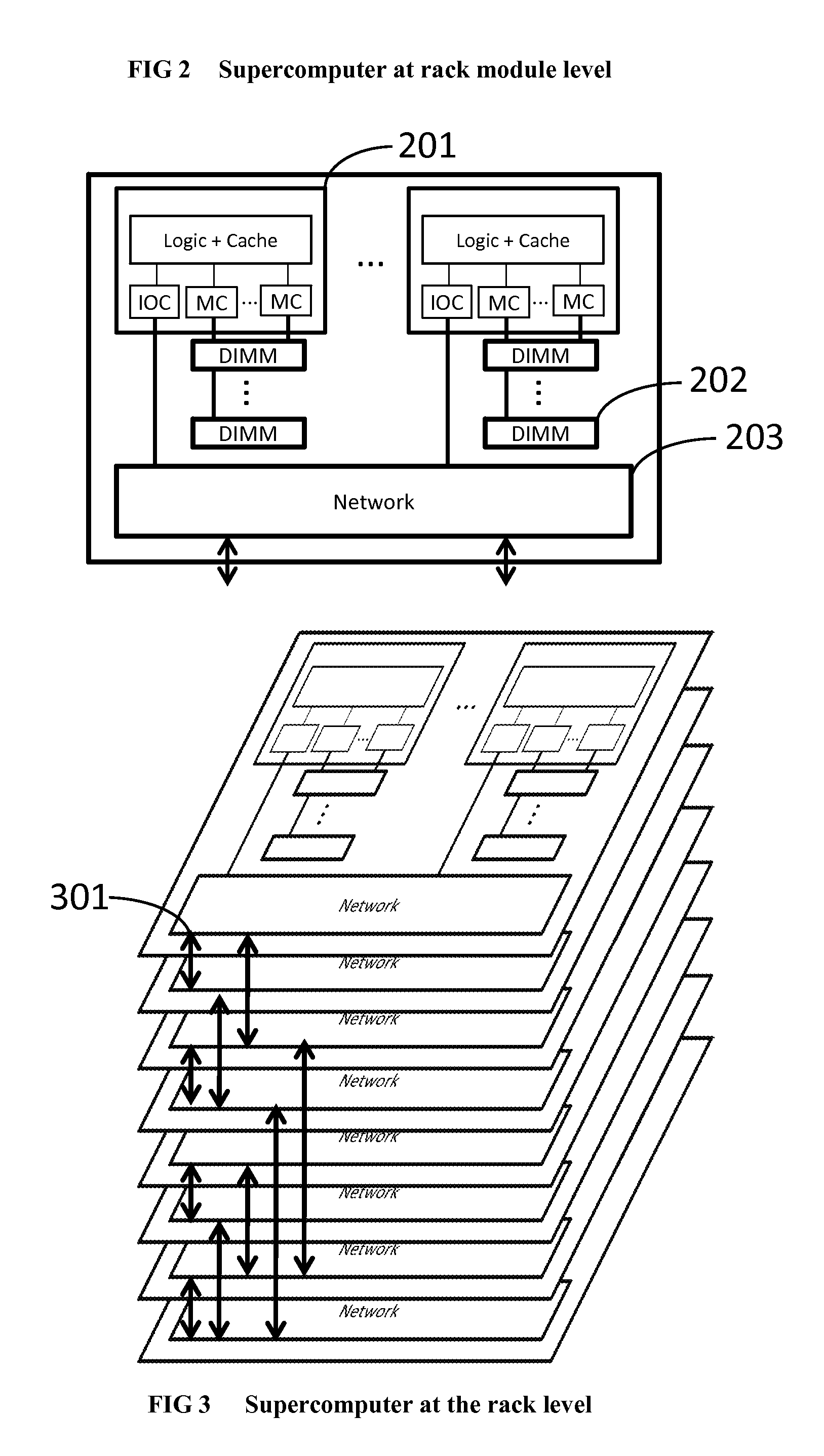Method and system for converting a single-threaded software program into an application-specific supercomputer
a software program and application-specific technology, applied in the direction of memory adressing/allocation/relocation, multi-programming arrangements, instruments, etc., can solve the problems of rewriting the application using parallel programming constructs, affecting the efficiency of the application, and affecting the performance of the application, so as to achieve the effect of low overhead and high efficiency
- Summary
- Abstract
- Description
- Claims
- Application Information
AI Technical Summary
Benefits of technology
Problems solved by technology
Method used
Image
Examples
Embodiment Construction
[0168]We are about to describe the details a method to automatically convert a single-threaded software program into an application-specific supercomputer, where the method comprises:[0169]a. Converting an arbitrary code fragment from the application into customized hardware whose execution is functionally equivalent to the software execution of the code fragment; and[0170]b. Generating interfaces on the hardware and software parts of the application, which:[0171]i. Perform a software-to-hardware program state transfer at the entries of the code fragment;[0172]ii. Perform a hardware-to-software program state transfer at the exits of the code fragment; and[0173]iii. Maintain memory coherence between the software and hardware memories.
We will also describe the application-specific supercomputer system produced by the method in detail. Since the field of compiling arbitrary single-threaded software to an application-specific supercomputer is new, we have provided plenty of detail in th...
PUM
 Login to View More
Login to View More Abstract
Description
Claims
Application Information
 Login to View More
Login to View More - R&D
- Intellectual Property
- Life Sciences
- Materials
- Tech Scout
- Unparalleled Data Quality
- Higher Quality Content
- 60% Fewer Hallucinations
Browse by: Latest US Patents, China's latest patents, Technical Efficacy Thesaurus, Application Domain, Technology Topic, Popular Technical Reports.
© 2025 PatSnap. All rights reserved.Legal|Privacy policy|Modern Slavery Act Transparency Statement|Sitemap|About US| Contact US: help@patsnap.com



